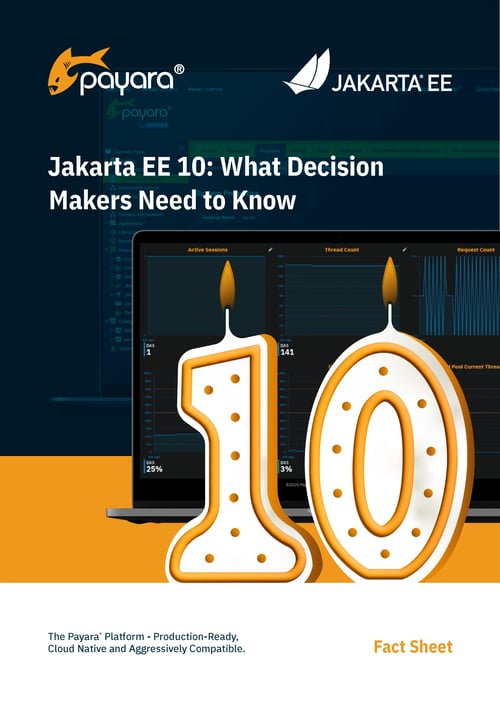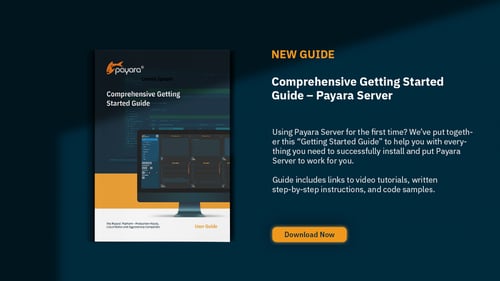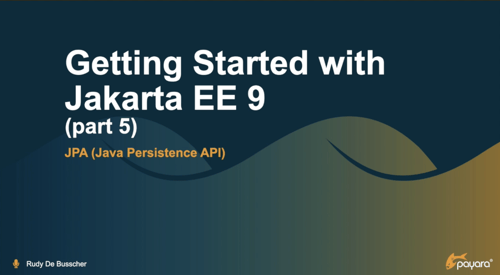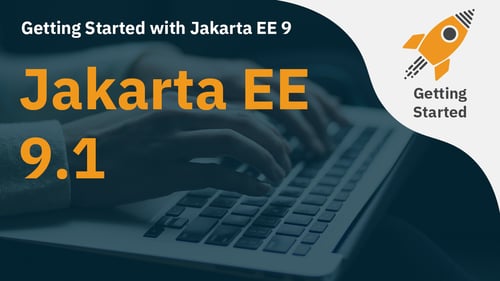Posts tagged getting started with Jakarta EE
Fine Tuning Payara Server 6 in Production
Published on 24 Jul 2024
by Ramya Billapati
Topics:
Payara Server,
Java 11,
Java,
getting started with Jakarta EE,
Jakarta EE
|
1 Comment
Watch Webinar Recording - Uncovering The Secrets of Java Runtime Choices for Jakarta EE Applications
Published on 17 Jun 2024
by Chiara Civardi
Topics:
Developer,
Payara Events,
Java,
getting started with Jakarta EE,
Jakarta EE
|
0 Comments
'Java' can be considered an umbrella term encompassing different technologies rather than a single element or solution. This webinar with Simon Ritter from Azul & Luqman Saeed from Payara - watch here - shed a light on what different Java aspects and components, illustrating how software developers can leverage these technologies, including runtime options, to deliver highly effective applications.
What Is Jakarta EE 10?
Published on 06 Sep 2022
by Priya Khaira-Hanks
Topics:
Java EE,
JakartaEE,
getting started with Jakarta EE,
Jakarta EE
|
0 Comments
Jakarta EE CDI: What's New in Jakarta EE 10?
Published on 04 Aug 2022
by Alfonso Altamirano
Topics:
Java EE,
CDI,
JakartaEE,
getting started with Jakarta EE,
Jakarta EE
|
0 Comments
Comprehensive Getting Started Guide – Payara Server
Published on 23 Dec 2021
by Priya Khaira-Hanks
Topics:
JakartaEE,
Payara Platform 5,
Payara Platform,
getting started with Jakarta EE
|
0 Comments
Payara Platform is an open source middleware platform that supports Jakarta EE (formerly Java EE) applications in ANY environment: on premise, in the cloud, or hybrid.
It is a solution to GlassFish problems such as lack of supported Docker images and automation assistance, no internal monitoring system and an absence of modern security standards and critical server event alerts and notfiers. It is also an alternative to Oracle Weblogic, Wildfly, JBoss EAP, WebSphere, OpenLiberty and more.
Our previous Getting Started guide had not been updated with improvements to Payara Platform, such as our hide password with password aliases feature - and did not contain comprehensive guides to integration with other technologies.
Getting Started with Jakarta EE 9: Jakarta Validation
Published on 30 Nov 2021
by Rudy De Busscher
Topics:
JakartaEE,
getting started with Jakarta EE
|
0 Comments
In this last blog of the Getting Started with Jakarta EE 9 blog and video series, we have a look at the Bean Validation specification. Using this specification, you can define some validation rules, from some simple ones on a single field to very complex ones on a business entity, that are reusable depending on the input frameworks you are using within your application.
Getting Started with Jakarta EE 9: Jakarta Faces (JSF)
Published on 24 Sep 2021
by Rudy De Busscher
Topics:
JakartaEE,
getting started with Jakarta EE
|
8 Comments
With Jakarta Faces, you can build user interfaces for web applications, including UI components, state management, event handing, input validation, page navigation, and support for internationalization and accessibility. It is a server-side framework that allows for rapid development of web applications, mainly administrative applications which are data entry and business logic heavy. The web pages are created by defining the components that are required and the events that are triggered by the user, and the rendering happens in a separate phase that can be customised to your needs.
In this blog, we mention a few features of Jakarta Faces 3.0 as it is one of the largest specifications of Jakarta EE 9.
Getting Started with Jakarta EE 9: Jakarta Persistence API (JPA)
Published on 22 Sep 2021
by Rudy De Busscher
Topics:
getting started with Jakarta EE
|
1 Comment
With the Jakarta Persistence API, the system can perform the serialization of Java Objects into the Database or read data into objects. You can use Jakarta JPA to read and write Java instances easily from and to the database.
With the help of annotations on Java classes and instance variables, the mapping is defined between the Java world and the database world.
In this blog, we cover some of the basic aspects of the JPA specification and how you can use it. The specification is rather large so make sure you also consult some documentation and other resources to find out all the capabilities of the specification.
Getting Started with Jakarta EE 9: Jakarta EE 9.1
Published on 19 Jul 2021
by Rudy De Busscher
Topics:
getting started with Jakarta EE
|
0 Comments
Jakarta EE 9.1 was officially released at the end of May 2021. The objective of Jakarta EE 9.1 is to provide certification on Java SE 11 and not to deliver new features. These are scheduled for Jakarta EE 10.
In this blog, we describe how you can use Jakarta EE 9.1 and some background around Jakarta EE 9.1.
Create a Jakarta EE 8 Web App with Payara Server and Your Favorite IDE
Published on 22 Jun 2021
by Debbie Hoffman and Rudy De Busscher
Topics:
Payara Server 5,
JakartaEE,
getting started with Jakarta EE
|
0 Comments









